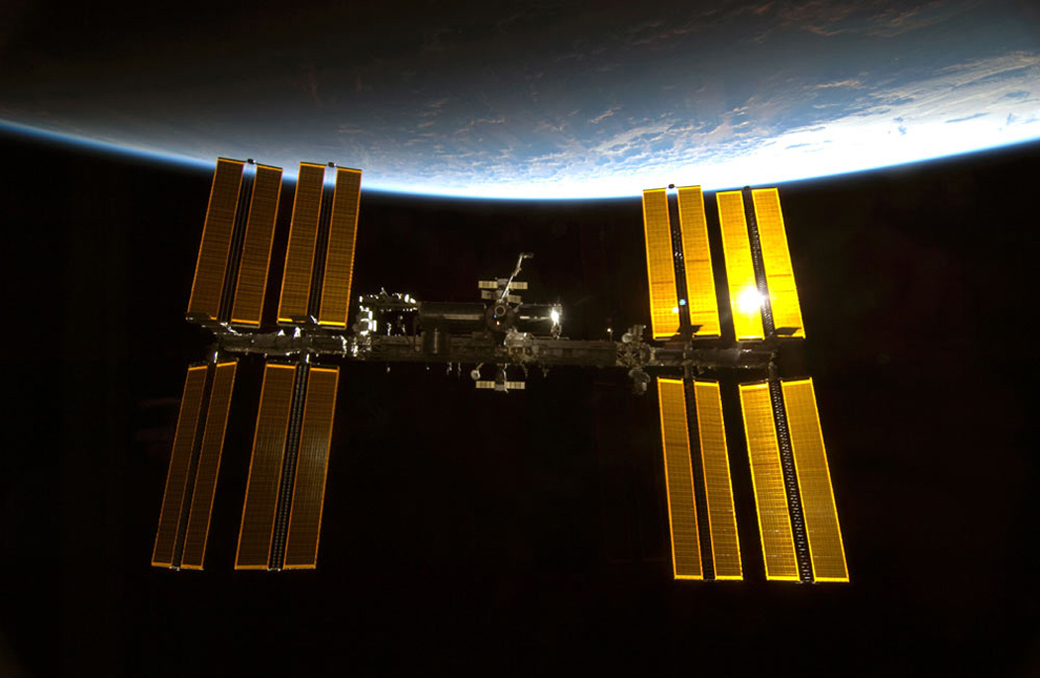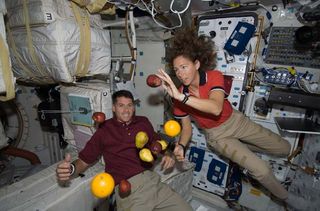How Space Science Is Helping Fight Against Cancer

Advanced strategies to fight cancer are taking inspiration from experiments in the final frontier of outer space, researchers say.
The gravity experienced in low-Earth orbit, which is 10,000 to 1 million times less powerful than that felt on Earth's surface, allows researchers to study cell behavior that's normally masked by responses to gravity. Learning more about these processes is shedding light on how cells usually work, and how they can malfunction in the case of cancer.
"When you take away the force of gravity, you can unmask some things you can't readily see on Earth," said cell biologist Jeanne Becker of Nano3D Biosciences in Houston. "When gravitational force is reduced, cell shape changes, the way they grow changes, the genes they activate change, the proteins they make change." [6 Cool Space Shuttle Experiments]
Scientists have been taking note of such effects for decades. For instance, experiments in the 1970s on Skylab, the first U.S. space station, discovered that red blood cells develop bumpy surfaces in space, a change that disappeared within hours once astronauts returned to Earth.
More recently, research investigating 10,000 genes found that the behavior of 1,632 of them — including genes linked with cell death and tumor suppression — was altered in microgravity.
Although microgravity can distort normal biology, conventional procedures for studying cells on Earth can introduce their own problems. For instance, experiments on Earth often grow cells as flat layers in dishes, obscuring how they behave in real life when they can interact with each other in three dimensions in complex ways.
"When you grow cancers in three dimensions as opposed to flat layers, their response to drugs is vastly different — they become more resistant to drugs," Becker told SPACE.com.
Get the Space.com Newsletter
Breaking space news, the latest updates on rocket launches, skywatching events and more!

These discoveries spurred the creation of devices that could mimic the effects of microgravity on Earth so researchers could see how cells behave in three dimensions. For example, so-called rotating wall vessel bioreactors constantly spin cells, keeping them as close to the free fall seen in space as possible.
Other devices use magnetic fields to levitate cells and counteract the pull of gravity.
Such machines have supported analyses of a wide variety of cancers, such as those of the breast, cervix, kidney, colon, liver, skin, lung, bone, ovaries and prostate.
"The work we do can help address how cancer grows, reveal new ways of tackling drug resistance," Becker said.
Although devices that seek to mimic or induce microgravity are valuable to science, they cannot fully replace the effects seen in orbit. For instance, the crew of the final doomed flight of the space shuttle Columbia in 2003 found that prostate cancer cells grown in space developed into golf-ball-size structures, while clumps grown in rotating wall vessel bioreactors only reached 3 to 5 millimeters (0.1 to 0.2 inches) in size.
"With the International Space Station, we have a lab that doesn't exist anywhere else," Becker said. "It's an exciting platform for discovery."
Space-based science has also improved microencapsulation technology that envelops molecules in capsules, helping develop new delivery systems for cancer drugs. In addition, research exploring how plants respond to light has also shown new ways to reduce pain associated with cancer treatments.
Although NASA's space shuttle program retired in 2011, "we have commercial access to the space station coming up the pipeline, and we still have access to it through vehicles like the Russians' Progress spacecraft," Becker said. "So the opportunities are really limitless."
Becker and her colleague Glauco Souza detailed this research online April 12 in the journal Nature Reviews Cancer.
Follow us @Spacedotcom, Facebook or Google+. Originally published on SPACE.com.
Join our Space Forums to keep talking space on the latest missions, night sky and more! And if you have a news tip, correction or comment, let us know at: community@space.com.

Charles Q. Choi is a contributing writer for Space.com and Live Science. He covers all things human origins and astronomy as well as physics, animals and general science topics. Charles has a Master of Arts degree from the University of Missouri-Columbia, School of Journalism and a Bachelor of Arts degree from the University of South Florida. Charles has visited every continent on Earth, drinking rancid yak butter tea in Lhasa, snorkeling with sea lions in the Galapagos and even climbing an iceberg in Antarctica. Visit him at http://www.sciwriter.us